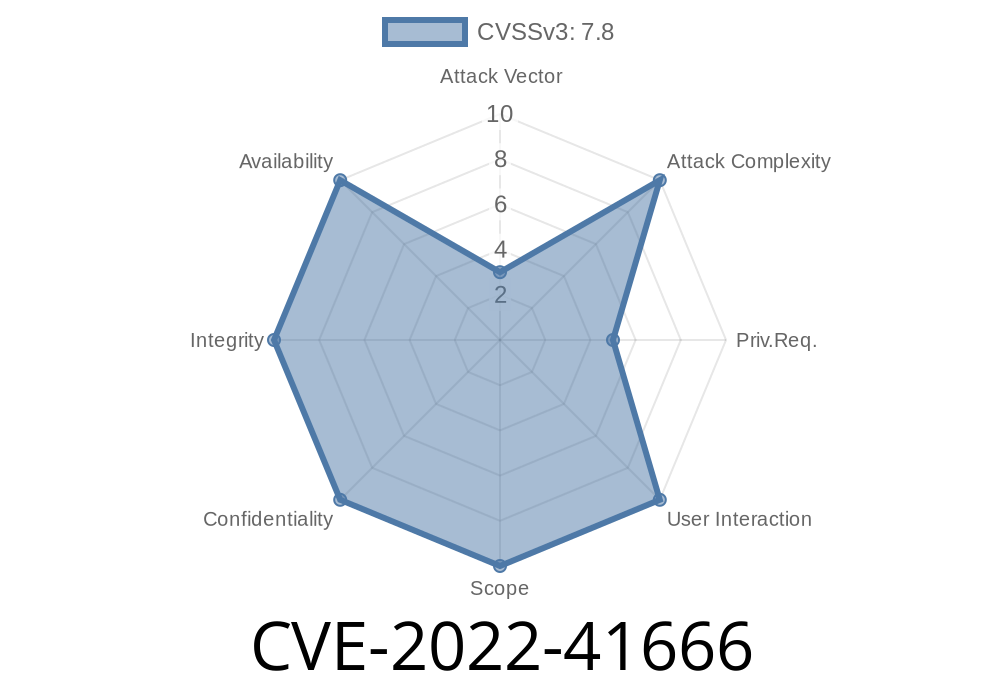CVE-2022-41666 is a serious vulnerability found in Schneider Electric's EcoStruxure Operator Terminal Expert and Pro-face BLUE products. It is a CWE-347: Improper Verification of Cryptographic Signature flaw. This vulnerability enables adversaries who have local user privileges to exploit the affected systems by loading a malicious DLL, which can, in turn, lead to execution of malicious code.
Please note that the affected products are EcoStruxure Operator Terminal Expert (V3.3 Hotfix 1 or prior) and Pro-face BLUE (V3.3 Hotfix 1 or prior).
In this post, we will discuss the details of the CVE-2022-41666 vulnerability, provide code snippets as examples, and link to the original references so you can better understand and deal with this security issue.
Exploit Details
Due to the improper verification of cryptographic signatures in the affected products, an attacker with local user access can escalate their privileges by loading a malicious DLL. This DLL can then execute code on the affected system, potentially compromising the integrity and security of the system.
Using a tool such as ProcMon from SysInternals, researchers have identified the affected DLLs that can be replaced by malicious DLLs to exploit this vulnerability.
Here's a code snippet of a typical vulnerable DLL
#include <Windows.h>
BOOL APIENTRY DllMain(HMODULE hModule, DWORD ul_reason_for_call, LPVOID lpReserved)
{
switch (ul_reason_for_call)
{
case DLL_PROCESS_ATTACH:
{
MessageBox(NULL, L"Malicious DLL Loaded!", L"Success", MB_ICONINFORMATION);
break;
}
case DLL_THREAD_ATTACH:
case DLL_THREAD_DETACH:
case DLL_PROCESS_DETACH:
break;
}
return TRUE;
}
To exploit this vulnerability, an attacker needs to replace the original DLL with the malicious DLL and then restart the service or application. After the successful attack, the system would execute the malicious code contained in the DLL, giving the attacker the ability to execute arbitrary code, potentially compromising the security of the affected system.
Mitigations
Schneider Electric has released updates to address this vulnerability. Users are recommended to update their systems with the latest software version, which mitigates the issue by improving the verification of cryptographic signatures in the affected products.
Users can find more information about the updates and download them from Schneider Electric's official website:
- EcoStruxure Operator Terminal Expert V3.3 Hotfix 2 : Download Link
- Pro-face BLUE V3.3 Hotfix 2 : Download Link
Implement regular vulnerability scanning and patch management processes.
- Ensure that proper access controls are in place to limit unauthorized access to system files and directories.
Original References
- CVE-2022-41666 - NVD
- Schneider Electric Security Notification
To conclude, it is crucial to stay up-to-date with security patches and employ best practices in system management to protect your organization from threats like this CWE-347 vulnerability. Stay safe!
Timeline
Published on: 11/04/2022 05:15:00 UTC
Last modified on: 11/05/2022 02:01:00 UTC
